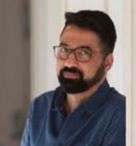Kaiwan Mehta
Tekton
Tekton: Volume 11, Issue 1, July 2024
pp. 34 – 38
 Kaiwan Mehta is a theorist and critic in the fields of visual culture, architecture, and city studies. He holds a PhD in Cultural Studies from the Centre for the Study of Culture and Society, Bengaluru, Manipal University. He has authored ‘Alice in Bhuleshwar: Navigating a Mumbai Neighbourhood’ (Yoda Press, New Delhi, 2009) and ‘The Architecture of I M Kadri’ (Niyogi, New Delhi, 2016). He has delivered keynote lectures and seminars at Cornell University, Centre Pompidou, Paris, besides other Indian and international universities, institutions, museums, and organisations; and has also contributed a section on Modern and Contemporary Architecture in India and South-Asia for the recent and updated edition of Bannister Fletcher’s ‘A History of World Architecture’. Besides being a curator for several seminal exhibitions in India and abroad, and an educator at a few prestigious institutions, he has been the Managing Editor of Domus India. Presently, he is the Dean at Balwant Sheth School of Architecture, NMIMS, Mumbai.
Kaiwan Mehta is a theorist and critic in the fields of visual culture, architecture, and city studies. He holds a PhD in Cultural Studies from the Centre for the Study of Culture and Society, Bengaluru, Manipal University. He has authored ‘Alice in Bhuleshwar: Navigating a Mumbai Neighbourhood’ (Yoda Press, New Delhi, 2009) and ‘The Architecture of I M Kadri’ (Niyogi, New Delhi, 2016). He has delivered keynote lectures and seminars at Cornell University, Centre Pompidou, Paris, besides other Indian and international universities, institutions, museums, and organisations; and has also contributed a section on Modern and Contemporary Architecture in India and South-Asia for the recent and updated edition of Bannister Fletcher’s ‘A History of World Architecture’. Besides being a curator for several seminal exhibitions in India and abroad, and an educator at a few prestigious institutions, he has been the Managing Editor of Domus India. Presently, he is the Dean at Balwant Sheth School of Architecture, NMIMS, Mumbai.
kaiwanstudio@gmail.com
ABSTRACT
This essay reflects upon several questions on teaching of history of architecture arising out a sustained and thoughtful engagement with the subject in various forms. A most basic question that needs asking is about the purpose of teaching history of any domain in the curriculum towards a primary degree in that domain. The bent of asking such questions and answering them may lead to many directions. Besides pragmatic and conservative reasons of studying the past, it is necessary to acknowledge its shaping of the discourse of the present because our beliefs and imaginations in the present are based on what is inherited, remembered, and celebrated; equally on what is left as forgotten. An architectural object from the past with its embedded knowledge is inherited in the present, holding different meanings than originally intended. Therefore, to study and teach history to fathom and debate the present maybe a more fruitful exercise, a more productive engagement. The essay argues that creative working with historicity may allow us to understand architecture and what it represents better, and for that one needs to engage with newer ways of enquiry.
KEY WORDS:
Architectural History, Architectural Object, Object Studies, Object Histories

